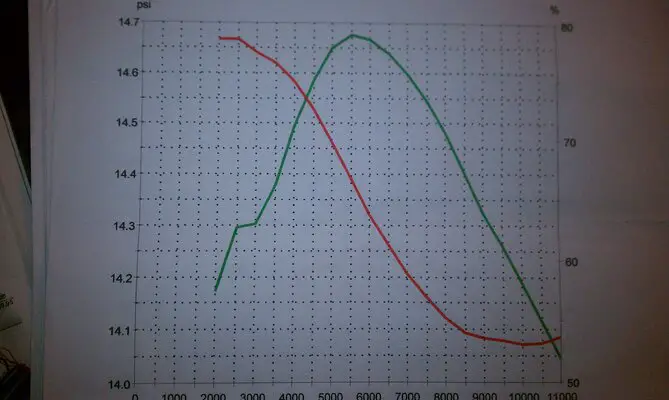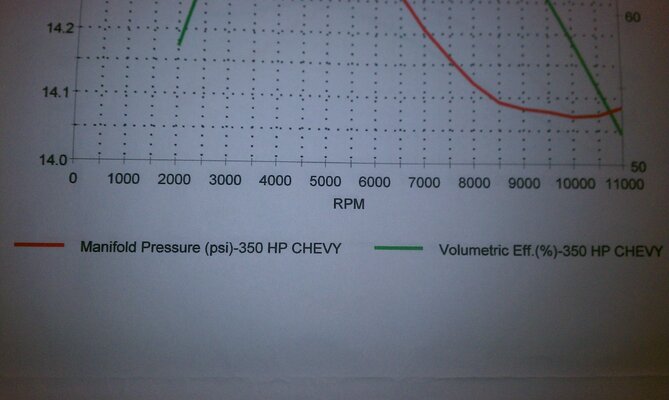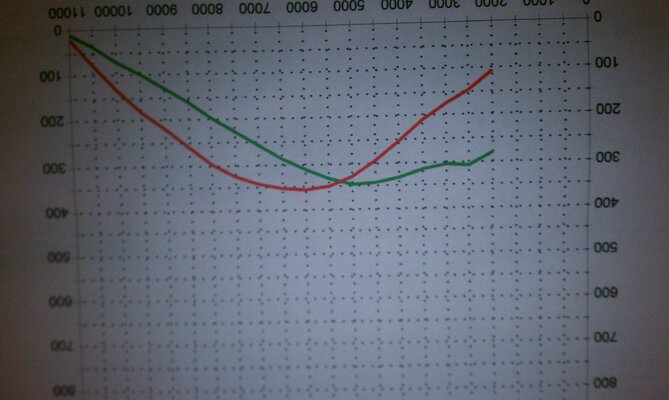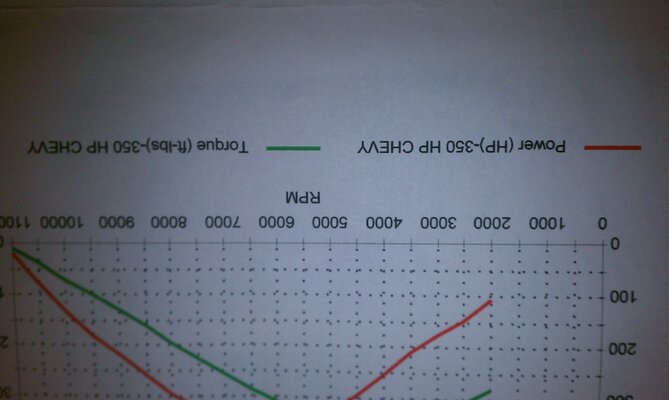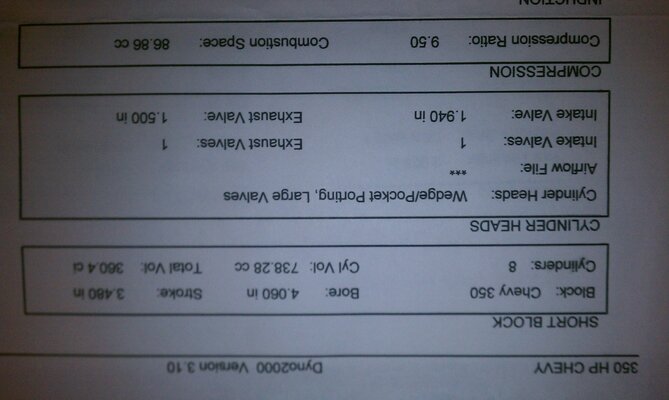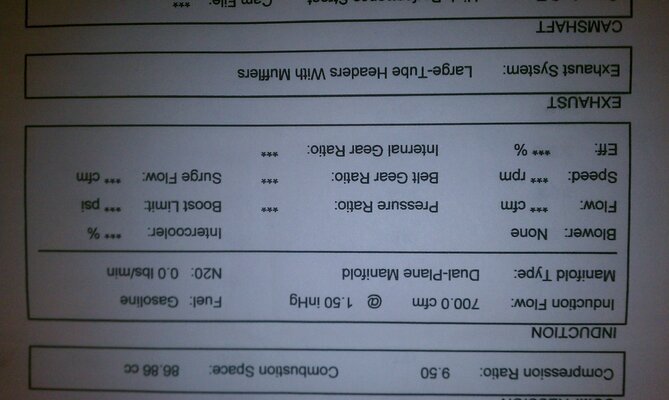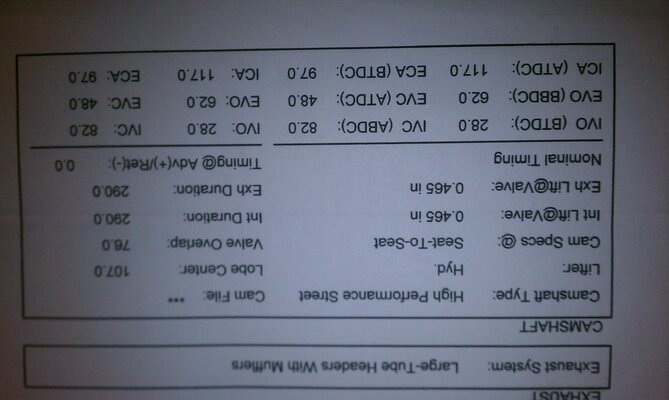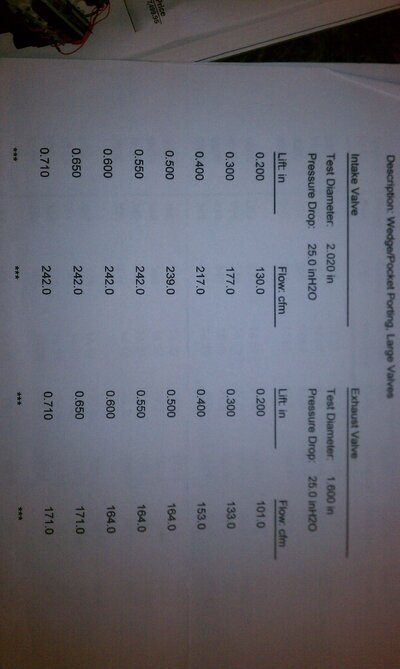first road test issues any help
- Thread starter Grandprixpaul
- Start date
You are using an out of date browser. It may not display this or other websites correctly.
You should upgrade or use an alternative browser.
You should upgrade or use an alternative browser.
- Status
- Not open for further replies.
That's just a cam spec, meaning it's set at zero with the crank. not what you set the base timing at.
sh*t lol i didnt know that ,thanks what you think would be a good place to start with the timing ?
Oldsmoletick said:Someone above mentioned 12-14, I'm not a chevy guy, but that sounds like a good place to start.
x2. it should make a massive difference in what you feel with your right foot. you were hardly burning your fuel mixture before. If you drove it long enough like that you may have fouled your spark plugs too.
watch that video, it's very helpfulkhan0165 said:a good place to start is 12 to 14 degrees initial timing (at idle)
this is a helpful video http://www.youtube.com/watch?v=wifTHbb06_I
depending on how you plan to drive the car, there are a bunch of ways you can go about tuning your timing. And be aware that it will take alot of trial and error to figure out what works, so be patient
the best way to test is at a dyno or at the track, where you have practical numbers to compare. But if that won't be for a while, we need to get you at a starting base line.
first, you need to determine if your vacuum advance is hooked up, and where your time is at right now. Get a timing light... if you're new to this, I suggest a digital one http://www.equus.com/Product/Diagnostic/timing.html
I was new to this recently, and a digital one really helped me. It gives you lots of information, you don't need a buddy to help you, and there's no guessing how many degrees you're at once you get past 20deg advance.
To get yourself started, go out on a nice weather day, put the car in drive, and punch it off the line. If it struggles, advance the timing a little, if it knocks, back the timing off. Get back in, try again... keep advancing until you hear knocking (it will sound like pinging or marbles in your engine). The idea is to load the engine as much as you can, which will cause the engine to knock a little. This will tell you where the extremes of your engine are.
... once you get to this point, back off the timing just a knudge, try again, see if it knocks, try again until there's no knock thru the whole rpm range.
Now you have a baseline for what your car likes and doesn't like. This is where you can use your timing light to play with how early you can bring in total timing. You can get distributor recurve kits to alter the quickness of your timing advance.
stout chevy's like between 12 to 16, even 18 degrees initial, depending on the aggressiveness of your cam. Using only mechanical advance, a stout chevy likes between 33 and 38 deg, 34 I've found best for many cases. With vacuum advance added, you may be into the 42 to 44 deg range.
now for a real world example... my engine likes 34 deg total with mechanical advance. Vacuum advance is just too much for my engine. But your engine may like vacuum advance. I use the "medium weight" recurve springs, which brings in the 34 deg at 3700rpm. If I bring it in sooner, it will knock on a hot day... if I bring it in later, it'll be happier but make less torque. At 34 deg @ 3700rpm, it lands at between 18deg initial timing @ 850rpm.
... now before you get overwhelmed, you don't need to learn all this right now. I'm just giving you a wide range of ideas. You will get a feel for it once you start experimenting.
I hope this helps, and I hope others will chime in on more/other suggestions.
Getting alot better response i set the timing at 14 right now going to mess around more with that later but i wanted to ask if anyone with the info ive posted ,and me not knowing what spring are already in my distributor ,can give me a starting off point to go with on the springs ,i have two new set of the spring kits to dable with .
it all comes down to the "timing curve". For lack of better words, this is the "quickness" between your initial and total timing. It all works off centrifugal force. As your distributor spins, the weights expand outwards. The springs control the rate of expansion.
as a rule of thumb, heavier weights will expand outwards faster than lighter weights. And lighter springs will allow quicker expansion than heavier springs.
so keeping this in mind... larger cam motors will respond better if your total timing comes in earlier. More mild cam motors respond better if total timing comes in gradually.
i.e: short timing curve for big cam, long timing curve for small cam.
Now, with this understanding, this is how it effects the performance of the motor... Quicker curves will improve throttle response and bottom end torque, but they put you at risk of detonation. Slower curves are good for mild and smooth driving, you can usually push more total timing with less risk of detonation.
Now, for your answer... You don't have a monster drag motor, it's on the mild side, so you definitely do not need heavy weights with light springs. I say, start with the weights that are in there, and just play with the springs. Start with the heaviest spring, and see what rpm your total timing is coming in. If you think it can come in earlier, advance the timing... keep doing this until you're close to detonation under heavy load.
Then, if you're still not happy with throttle response, you think you can make it more crisp... move onto medium weight springs. Then see what rpm the total timing comes in. If you think it can come in earlier, keep advancing the timing...
keep repeating these steps, it might take you 100 tries... lots of trial and error involved, don't get frustrated, just keep trying new combinations...
you'll eventually hit the sweet spot, and you'll learn alot.
took me weeks to nail down a tune I liked, and still trying new combos... Just have fun
as a rule of thumb, heavier weights will expand outwards faster than lighter weights. And lighter springs will allow quicker expansion than heavier springs.
so keeping this in mind... larger cam motors will respond better if your total timing comes in earlier. More mild cam motors respond better if total timing comes in gradually.
i.e: short timing curve for big cam, long timing curve for small cam.
Now, with this understanding, this is how it effects the performance of the motor... Quicker curves will improve throttle response and bottom end torque, but they put you at risk of detonation. Slower curves are good for mild and smooth driving, you can usually push more total timing with less risk of detonation.
Now, for your answer... You don't have a monster drag motor, it's on the mild side, so you definitely do not need heavy weights with light springs. I say, start with the weights that are in there, and just play with the springs. Start with the heaviest spring, and see what rpm your total timing is coming in. If you think it can come in earlier, advance the timing... keep doing this until you're close to detonation under heavy load.
Then, if you're still not happy with throttle response, you think you can make it more crisp... move onto medium weight springs. Then see what rpm the total timing comes in. If you think it can come in earlier, keep advancing the timing...
keep repeating these steps, it might take you 100 tries... lots of trial and error involved, don't get frustrated, just keep trying new combinations...
you'll eventually hit the sweet spot, and you'll learn alot.
took me weeks to nail down a tune I liked, and still trying new combos... Just have fun
a few more points...
you won't be able to tune this way without a proper timing gun. Since your timing mark doesn't go past 20deg, you have to guess and mark the balancer after that... this is a terribley inaccurate way of timing for total advance. With a "Timing Advance Light", you have the ability to dial in the timing you want, which will then flash at 0deg, thus accurately telling you where your total advance is. The digital guns have rpm readouts, so you don't need a buddy with you to tune.
I have a cam with 0.236 duration @ 0.050... it's pretty lopey for street use, and likes quick total advance to make decent torque. But even with so much duration, my total 34 deg only comes in at 3700rpm. This is using medium springs/weights.
... so I think your motor will prefer a heavier spring, longer curve. You'll be able to push more timing, and you'll see a more even torque band. Which you'll like more for the street.
you won't be able to tune this way without a proper timing gun. Since your timing mark doesn't go past 20deg, you have to guess and mark the balancer after that... this is a terribley inaccurate way of timing for total advance. With a "Timing Advance Light", you have the ability to dial in the timing you want, which will then flash at 0deg, thus accurately telling you where your total advance is. The digital guns have rpm readouts, so you don't need a buddy with you to tune.
I have a cam with 0.236 duration @ 0.050... it's pretty lopey for street use, and likes quick total advance to make decent torque. But even with so much duration, my total 34 deg only comes in at 3700rpm. This is using medium springs/weights.
... so I think your motor will prefer a heavier spring, longer curve. You'll be able to push more timing, and you'll see a more even torque band. Which you'll like more for the street.
- Status
- Not open for further replies.
Similar threads
- Replies
- 0
- Views
- 627
- Replies
- 4
- Views
- 218
- Replies
- 2
- Views
- 247
- Replies
- 6
- Views
- 813
GBodyForum is a participant in the Amazon Services LLC Associates Program, an affiliate advertising program designed to provide a means for sites to earn advertising fees by advertising and linking to amazon.com. Amazon, the Amazon logo, AmazonSupply, and the AmazonSupply logo are trademarks of Amazon.com, Inc. or its affiliates.


